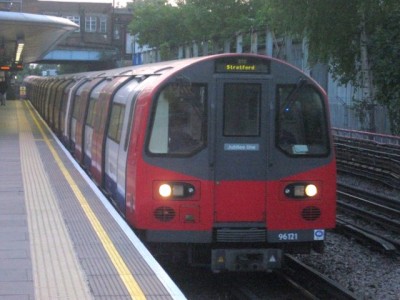On our 2019 summer vacation, after spending several days in Las Vegas with the Oren’s Transit Page extended family, Mrs. OTP and I rented a car to drive to the Grand Canyon for a few more days of vacation on our own. Our rationale was that seeing as how difficult it is to get to the Grand Canyon and that we were in the general neighborhood so to speak, we might as well take advantage of the opportunity to go since neither one of us had been there before. We were just two of the 5,974,411 people to visit the Grand Canyon that year, but getting there is not a simple unless one lives very close to the Grand Canyon itself.

View of the Grand Canyon, August 20, 2019
Today, about 90 percent of visitors to the Grand Canyon go to the South Rim, and we were among them. The South Rim is about a 4 hour drive from Phoenix and about a 5 hour drive from Las Vegas. The closest airport with commercial service to the South Rim is Flagstaff, only about 90 minutes away from the Grand Canyon by car, but service there is limited to flights to and from Phoenix. Dallas, and Denver, so most would need to connect in order to get there. However, prior to the improvement of area roads in the 1960s, getting to the Grand Canyon was even more complicated than it is today.
For the first half of the 20th Century, basically the only way in to and out of what is now Grand Canyon Village was by public transport of various sorts. At first, travelers had to hire buggies or rent horses from the tour operators who set up along the South Rim starting in the 1890s in order to travel from the railroad depots at Williams, Flagstaff, or Ash Fork to the canyon. train. The Atchison, Topeka and Santa Fe Railway built a 64 mile long branch line from Williams in order to bring tourists to the canyon’s edge, before the area was part of the National Park System. The line was completed in 1901. The railway also built the El Tovar Hotel adjacent to its Grand Canyon station. One could make a very strong argument that if it weren’t for the railroad, the critical mass needed to advocate for preserving the natural beauty of the Grand Canyon might not have been realized so quickly, and the area would not have come under the jurisdiction of the federal government in 1906 and ultimately the National Park Service in 1919.

Grand Canyon Railway Depot, August 20, 2019
While the branch line to the South Rim was not used by passenger services after 1968 and freight service after 1974 until private investors and operators reinstated the service in 1989, it has become quite popular since its restoration. There is at least one round trip each day from Williams to the South Rim, and about 25,000 passengers use the line each year. For many years, there was an organized transfer between the Southwest Chief at the Williams Junction Amtrak Station and the Williams Depot used by the Grand Canyon Railway, though this was discontinued at the end of 2017.

EMD F40PH 239 at the Grand Canyon Railway Depot, August 20, 2019
Once at the park itself, transit still plays an important role in how people get around. The National Park Service has operated a system of shuttle bus routes along the South Rim since 1974, in order to reduce vehicular traffic within the park itself. In fact, to get to viewpoints along the Hermit Road, one must use the shuttles at certain times of year. The system works quite well, as the buses allow hikers who do not wish to walk along the 13 miles of the South Rim where shuttle bus service is available to use the bus for some segments instead.

New Flyer C40LF C-10 at Hermit’s Rest, August 20, 2019
So while the transportation at the Grand Canyon today is not a conventional public transit system, it is difficult to imagine what the Grand Canyon National Park would look like were it not for the Atchison, Topeka and Santa Fe Railway bringing tourists to the South Rim in the early 20th century or the shuttle bus system that has been in operation since the 1970s. And for those hardy travelers who wish to experience the difficulties of getting to the even more remote North Rim (where only ten percent of Grand Canyon visitors go), despite being only about 10 miles from the South Rim Visitor Center as the crow flies, it is a 225 mile, 5 hour long drive from one rim to the other.
Kawasaki 7000 Series

 Alstom Citadis 302 008
Alstom Citadis 302 008
